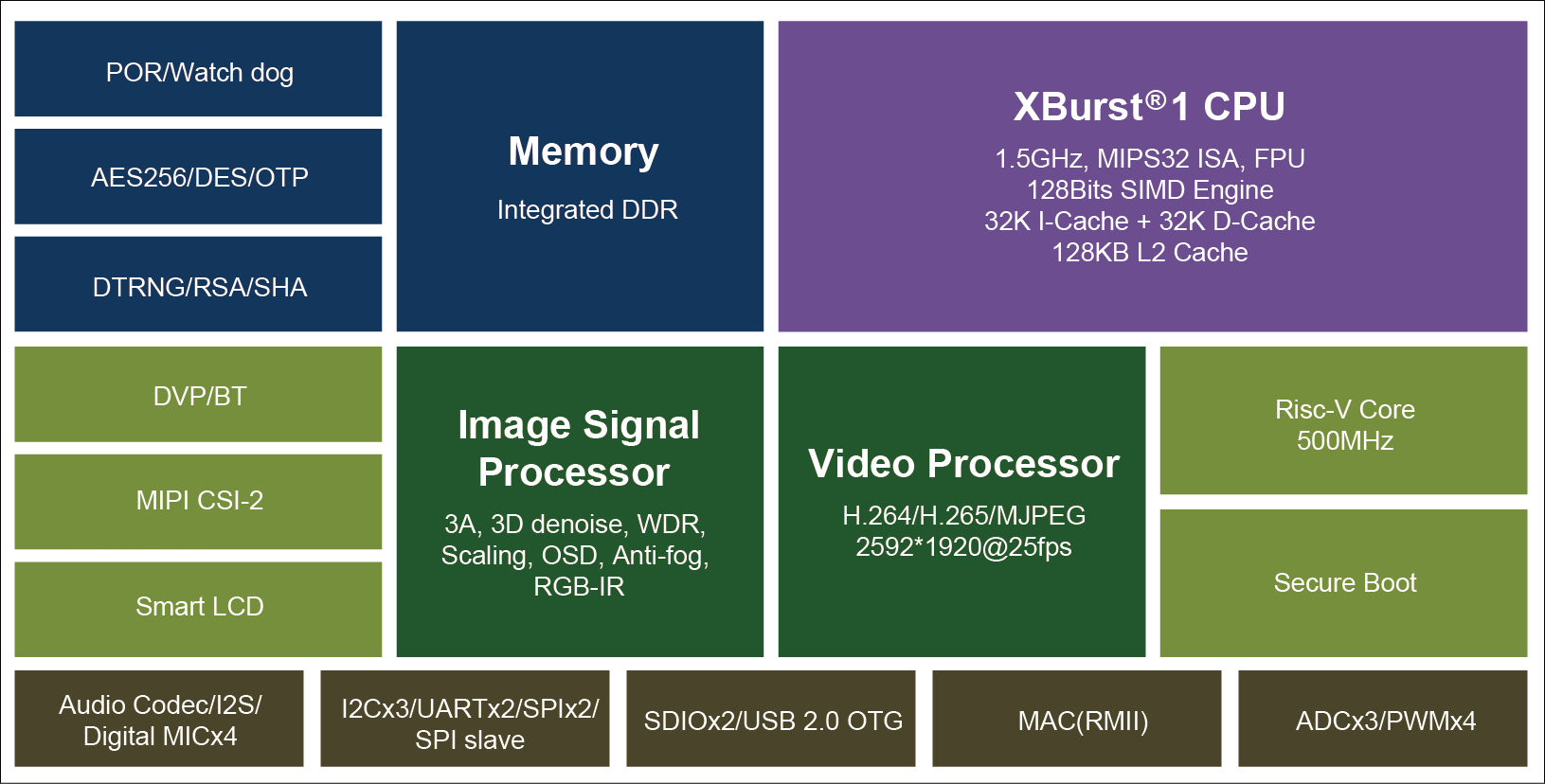Last week we asked “is MIPS dead?” question following the news that Wave Computing had filed for bankruptcy, two MIPS Linux maintainers had left, and China-based CIP United now obtained the exclusive MIPS license rights for mainland China, Hong Kong, and Macau.
Ingenic is one of those Chinese companies that have offered MIPS-based processors for several years, but one commenter noted that Ingenic joined the RISC-V foundation, and as a result, we could speculate the company might soon launch RISC-V processors, potentially replacing their MIPS offerings.

But Ingenic T31 video processor just features both with a traditional Xburst MIPS Core combines with a RISC-V “Lite” core
Ingenic T31 specifications:
- Processors
- XBurst 1 32-bit MIPS core clocked at 1.5GHz with Vector Deep Learning accelerator based on SIMD128, 64KB + 128KB L1/L2 Cache
- RISC-V independent lite core
- System Memory – Built-in 512Mbit (64MB) or 1Gbit (128MB) DDR2
- Storage – Quad SPI flash, NAND flash, SD card I/F
- Display I/F – Supports Smart LCD (SLCD) Display
- Video Encoder – H.264/H.265/MJPEG up to 2592×1920 @ 30fps with multiple streams support
- Camera
- MIPI CSI-2 & DVP/BT interfaces
- Supports 5M @ 30fps
- Starlight ISP
- Optimizations for low light and surveillance scenarios
- Upgraded 2D / 3D noise reduction
- Sharpening enhancement, ROI-AE, advanced WDR, DRC, distortion correction
- Audio – integrated audio codec up to 96Kbps, I2S, 4-channel digital MIC array; echo cancellation
- Networking – GMAC (from specs), RMII (from block diagram)
- USB – 1x USB OTG Interface
- Other Peripherals – WDT, 3x ADC, 2x UART, 3x I2C, 2x SPI, GPIO, 2x SDIO, 4x PWM
- Security – AES/RSA/SHA/TRNG/OTP; secure boot
- Power Consumption – Minimum: 300 mW (I suppose in idle mode, not deep sleep); typ.: 500mW including DDR (1080p @ 25fps H.265)
- Package – QFN88, BGA 9x9mm
- Process – 22nm
The processor supports fast boot with 200ms stable video output including fast AE (Auto Exposure) / AWB (Auto White Balance) and can be interfaced with WiFi and Bluetooth module.
Ingenic T31 is compatible with USB UVC and UAC and as such, is designed to be integrated into standardized video or audio products. Built-in AI algorithms enable human detection, facial detection/recognition, cry detection, vehicle detection, pets detection.
As I understand it, the MIPS core runs Linux, while the RISC-V core runs an unnamed RTOS. Based on the specifications including the highlight of fast boot capabilities, I’d assume this video processor targets surveillance cameras that wake up when motion is detected. This probably means the RISC-V processor is optimized for low power consumption and handles PIR detection, and after wake up the MIPS processor takes over to process the video and audio signals with the help of the ISP and video encoder, and run AI algorithms as needed.
More details may be found on the product page and Indasina website.
Thanks to Alex for the tip.

Jean-Luc started CNX Software in 2010 as a part-time endeavor, before quitting his job as a software engineering manager, and starting to write daily news, and reviews full time later in 2011.
Support CNX Software! Donate via cryptocurrencies, become a Patron on Patreon, or purchase goods on Amazon or Aliexpress




